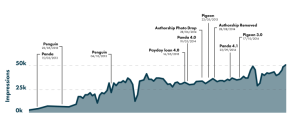If SEO and producing valuable content on a regular basis is the “long-play,” then Pay-Per-Click (PPC) Search Marketing (Google Adwords, Bing Ads, etc.) is the “short-play.”
Paid search requires that you “pay to play.” The good news is that, even if you don’t know what you’re doing, you’ll get traffic coming to your site.
The bad news is that, even if you don’t know what you’re doing, you will get traffic from folks who may not be interested in what you’re selling. Let’s see how we can improve on that.
PPC is a valuable strategy for getting qualified leads (folks who are looking for what you’re selling).
Getting positive results isn’t super difficult, but it does require a little time and a little research to get things going.
We’re shooting for a campaign that balances quality of leads with quantity of traffic, bringing in leads that provide a real ROI. Quality over quantity is the thing I would note here.
I’ve talked to some business owners about PPC, and they are frustrated by their ad campaigns. They have snazzy landing pages, really compelling ad copy, they set up their campaigns… And they get a whole lot of nothing.
They get more traffic, but too few leads or sales. Booooo!
Getting Effective With It
Writing effective ad copy is not rocket science, but it’s not exactly simple either.
The most important point I can drive home—and I say this in my “Way of the Tortoise” series—is to provide value. Don’t be tricky, do your research, and give people what they want. It seems like a no-brainer, but I find folks more often than not trying to get “too clever” with their strategy.
A customer wants to purchase X,Y, and Z. You sell X, Y, and Z!!! PPC helps you and your customer do business. Make it easy for them by making your point clear and compelling.
I don’t know if this was lifted from somewhere, but a colleague of mine, who is also a copywriter once, said to me: “say in five words what you would ordinarily say in ten. Always.” I always took that to mean: Get to the point. Quickly.
What Makes for “Good” Ad Copy
Good ad copy qualifies your leads by providing just enough information to get them to click and fill out a form or to make that call.
What makes for good ad copy then? Think about qualifiers for your business. Who is the perfect client or customer for you? Blue Steele Solutions has an awesome Customer Persona Template to help you map out that perfect client.
Be specific when coming up with your perfect client—it helps.
- Product pricing: If you offer a premium product, you may want to avoid using terms such as cheap, free, etc.
- Service or product scope: For example, “This is only for businesses with 50 employees or more.”
- Mention awards or achievements: This can reinforce the notion of your premium/quality offerings for those who value these traits.
- Use negative keywords: Use these to reduce getting leads from folks you don’t want. If your aim is a lead who appreciates quality, perhaps use negative keywords such as “discount, cheapest generic product,” etc. Learn more about negative keywords.
- Play to a sense of urgency: Use limited or near-expiring offers.
Pro Tip: As a general rule for overall ad copy quality and page/content quality, you should restate the ad copy elements on your landing pages.
Not only are your leads looking for continuity, but so are search engines. You want to ensure that leads—and bots—are getting to the page and content they expect.
Again, writing copy or SEOing your web pages isn’t an exact science. Be clear, be concise, and get to the point. Help people by providing value.
What are some of your top tips for writing effective ad copy?
Digital & Social Articles on Business 2 Community(48)








